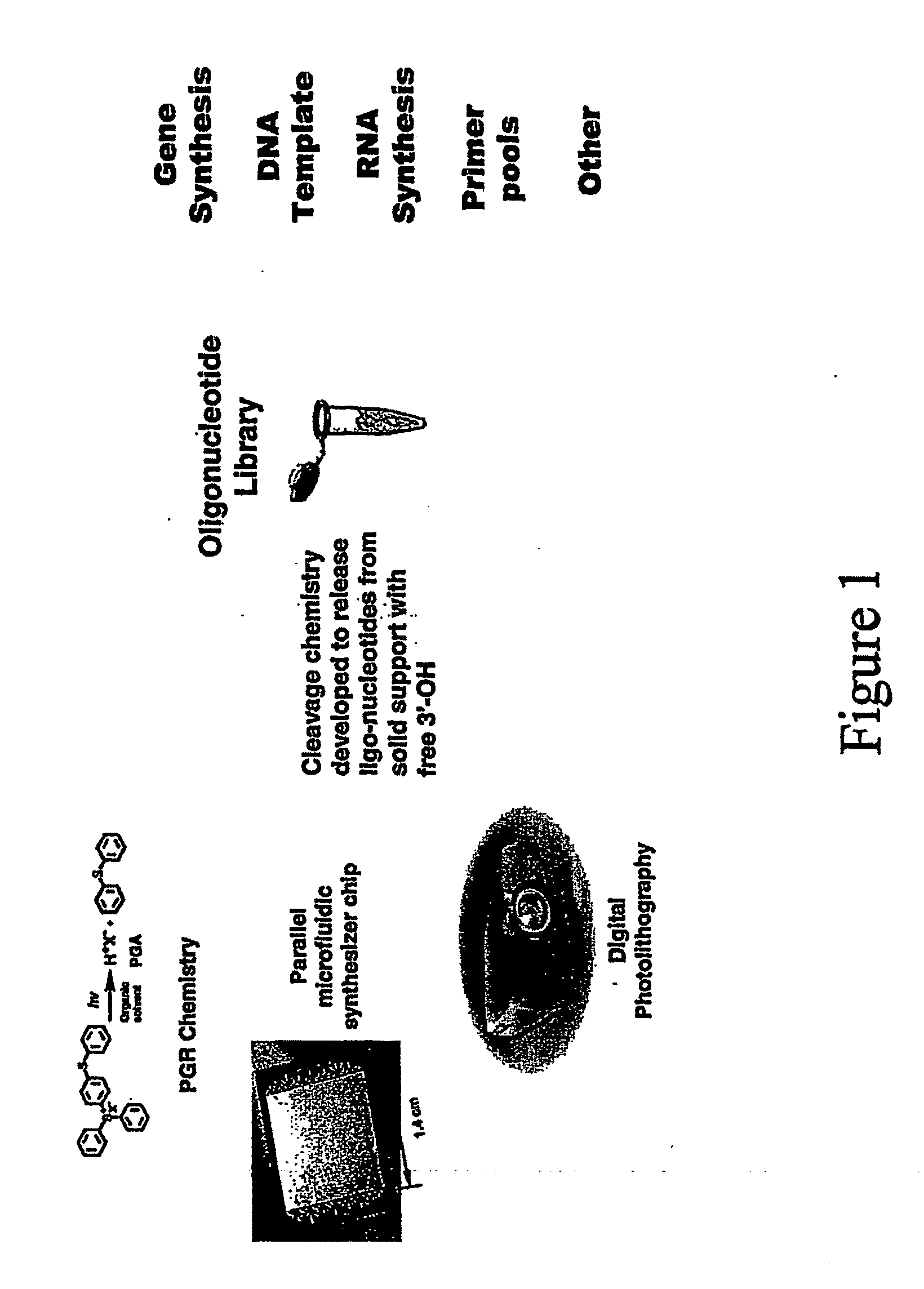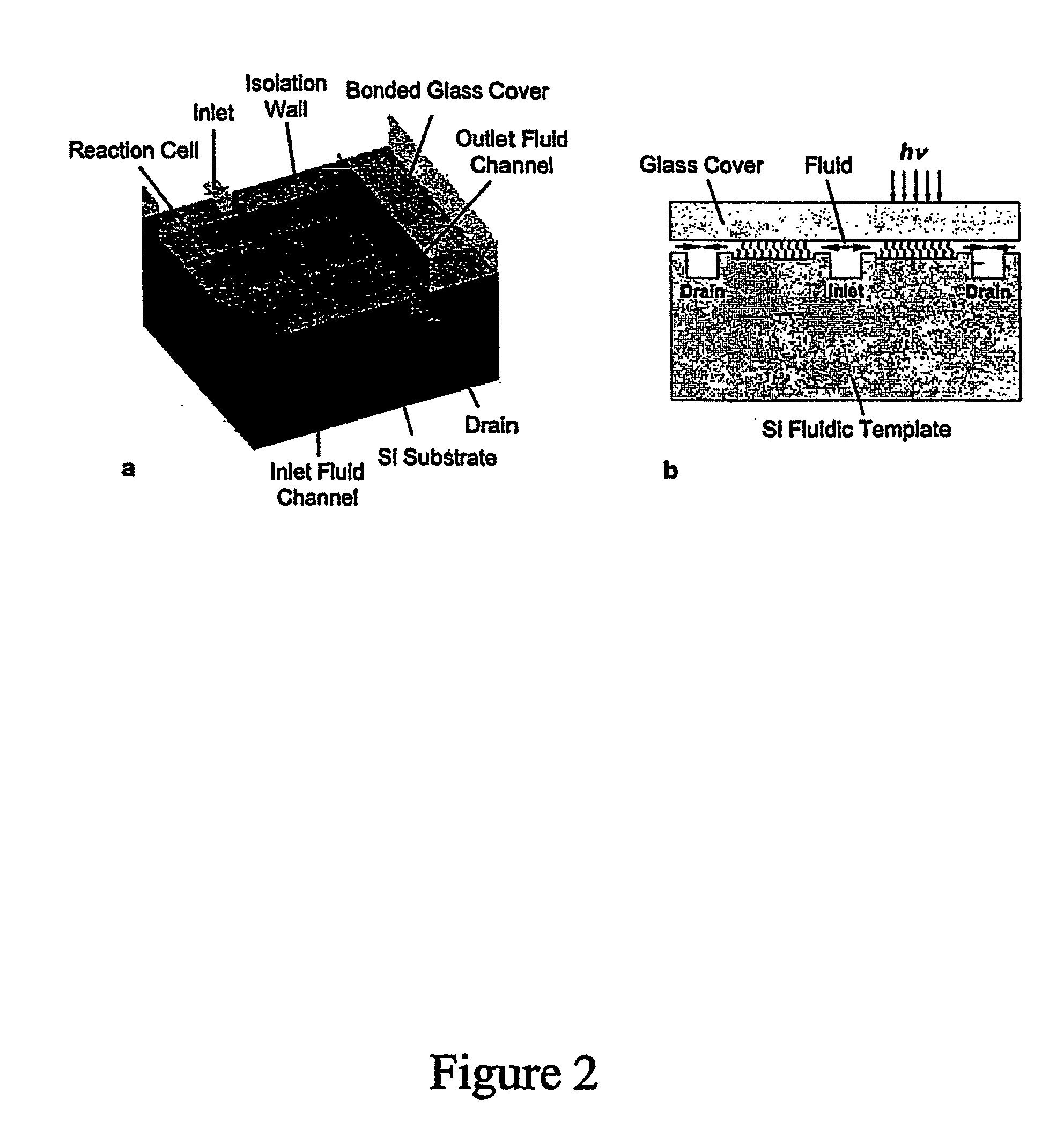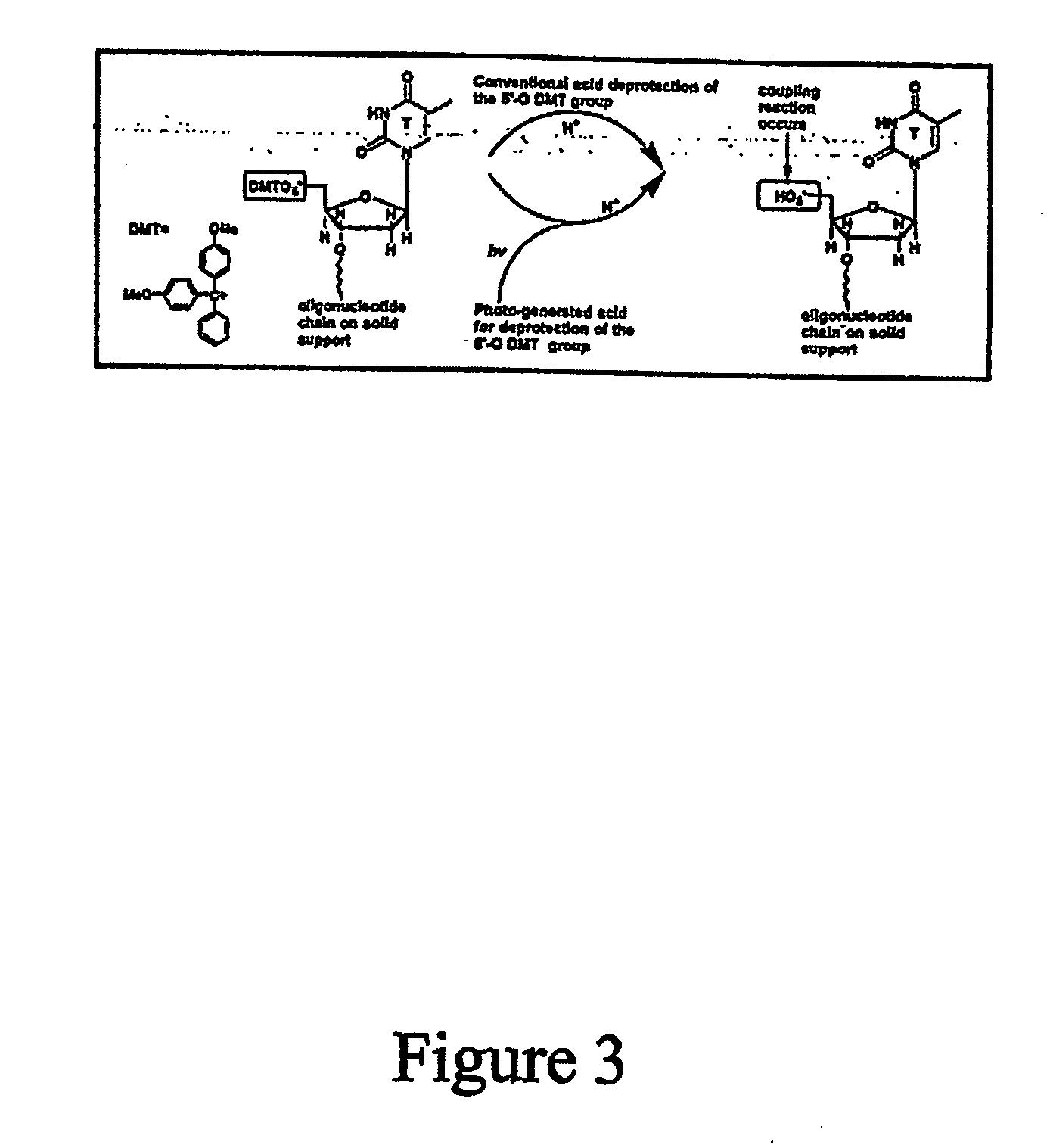Array oligomer synthesis and use
a technology of array oligomer and oligomer, which is applied in the field of high-throughput oligonucleotide synthesis, can solve the problems of affecting the progress of oligomer synthesis, affecting the synthesis of oligomer materials, and wasting time, so as to achieve the desired nucleic acid material for further manipulation and isolate the desired material
- Summary
- Abstract
- Description
- Claims
- Application Information
AI Technical Summary
Benefits of technology
Problems solved by technology
Method used
Image
Examples
example 1
[0235] The parallel synthesis of oligonucleotide DNA chips was performed on microarray chips held in a cartridge holder that was connected to a synthesizer. The microreaction well surfaces were derivatized with hydroxyl silyl and coupled with nucleophosphoramidite terminated with the 5′-O-DMT group for the detection chip, and coupled with 5′-phosphoamidite of 2′,3′-orthoester-U and terminated with 2′,3′-orthoester-U. During the light-directed deblock step, the reaction cell was first filled with a PGA-P solution (diaryl iodium salt and a sensitizer). A digital light pattern that was generated according to the predetermined chip layout and aligned to the reaction cells was projected onto the microarray plate. At irradiated reaction sites, 5′-DMT groups were removed by in situ formed PGA (H+) and terminal 5′-OH formed, or 2′,3′-orthoester of U was hydrolyzed by in situ formed PGA (H+) and terminal 2′ or 3′-OH formed. At un-irradiated reaction sites, no chemical reaction took place. Af...
example 2
[0236] Different strategies can be used to release or cleave oligonucleotides synthesized on a solid substrate from that substrate. The cleavage efficiency of three different linkers was examined to determine the preferred linker(s) for cleaving oligonucleotides from a solid substrate (rU is 5′-phosphoramidite with 2′-acetyl and 3′-DMT; U is 3′-phosphoramidite with 2′-fpmp and 5′-DMT; and dU is 2′-deoxyuridine). To begin, the following oligonucleotides were synthesized using an Expetide™ DNA synthesizer and standard phosphoamidite chemistry:
Sequence A3′-TTTTTTTTTTrUGTCCACAGCATCCGA-FAM-5′Sequence B3′-TTTTTTTTTTUGTCCACAGCATCCGA-FAM-5′Sequence C3′-TTTTTTTTTTdUGTCCACAGCATCCGA-FAM-5′
[0237] Sequence A was synthesized on CPG or an affinity support (stable linker under deprotection condition, Glen Research) functionalized for coupling with regular nucleophosphoramidites or 5′-phosphoamidte of 2′,3′-orthoester-U (rU). After coupling of rU with the surface OH group on the chip substrate, a ...
example 3
[0239] The ability to synthesize a functional full-length gene using the disclosed method of generating oligonucleotides on a microfluidic array platform and then ligating the oligonucleotides to generate a long DNA sequence was demonstrated for the Green Fluorescent Protein (GFP) gene. Members of the GFP family are the only known type of natural pigments that are essentially encoded by a single gene, since both the substrate for pigment biosynthesis and the necessary catalytic moieties are provided within a single polypeptide chain (Matz et al., Bioessays 24(10):953-59, 2002). The fluorescent nature of the gene allowed for a straight-forward analysis of the functionality of the gene produced by the disclosed method.
[0240] The GFP gene is 714 base pairs (bp) long. Suitable subchains (computational fragmentation) for the assembly of the GFP gene were selected, and oligonucleotides between 40 and 47 nucleotides long were synthesized on a chip using the methods outlined above. The com...
PUM
| Property | Measurement | Unit |
|---|---|---|
| voltage | aaaaa | aaaaa |
| volume | aaaaa | aaaaa |
| total internal volume | aaaaa | aaaaa |
Abstract
Description
Claims
Application Information
 Login to View More
Login to View More - R&D
- Intellectual Property
- Life Sciences
- Materials
- Tech Scout
- Unparalleled Data Quality
- Higher Quality Content
- 60% Fewer Hallucinations
Browse by: Latest US Patents, China's latest patents, Technical Efficacy Thesaurus, Application Domain, Technology Topic, Popular Technical Reports.
© 2025 PatSnap. All rights reserved.Legal|Privacy policy|Modern Slavery Act Transparency Statement|Sitemap|About US| Contact US: help@patsnap.com



